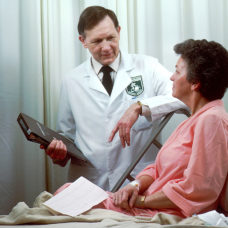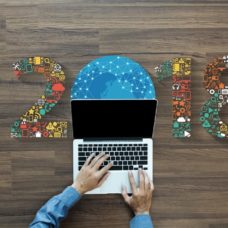A group of scientists developed a new AI system that turns low-resolution images to high-resolution images. Finally, an AI that can help digital artists deal with computer-illiterate clients.
Camera technology is no doubt one of the most progressive and highly developed technologies we have today. As people become more engaged with photography and visual arts, camera and smartphone manufacturers started developing superior devices that could produce more explicit, high-resolution images.
However, despite all these camera and imagery innovations, one cannot deny the attachment he or she has with those old, blurry pictures taken from years ago. If not that, you might have a family member that wants you to frame a picture–but they just can’t figure out what you mean by “send me the higher resolution image.”
That’s what pictures are for, right? Old photos are memories trapped in still images, they are snapshots of our personal connections–forever preserving the essence of special moments and experiences.
But, whatever the case, you will likely happen upon low-resolution images at some point. Don’t worry. A group of researchers may have solved this problem for good. Next time Grandma sends you a family photo from her circa 2001 HP scanner, you’ll be able to return it better than it looks in that hallway picture frame.
Researchers just used #artificialintelligence to enhance low-res images!Click To TweetUsing a new AI System to Enhance Low-Resolution Images
Researchers at the Max Planck Institute for Intelligence Systems in Tübingen, Germany utilized artificial intelligence to turn low-resolution images into high-resolution copies. This latest AI development was said to be a part of the research team’s effort to resolve the issue surrounding low-res pictures.
A part of the article published on the Max Planck’s website read:
“Everyone knows this problem: a friend sends a low-resolution image of last weekend´s hike to your smartphone, but when you save the picture of the beautiful bird and later add it to a digital photo album, the image shows checkerboard artifacts. The resolution is just too low. In times of need software is utilized that promises to upsample small sized images, but with poor results: Those holiday pictures look blurry and lack high definition.”
The scientists further emphasized the need to augment the study of single image super-resolution technology or SISR to solve the problem. Apparently, SISR is considered a widely studied tech, but it still produces limited results.
Current, SISR technology adds extra pixels to enlarge a low-resolution image and fills them with, what the team calls as, the average ‘look’ of all the surrounding pixels. This results in a blurry image version which is pretty disappointing.
So, to avoid the blurry image result, the Max Planck researchers proposed a new approach to give magnified pictures a more realistic texture. The technique involves a machine learning system which uses an algorithm that learns from experience in sharpening a picture’s look while upsampling the image.
The new AI system is called EnhanceNet-PAT technology and was developed by Mehdi S.M. Sajjadi together with Dr. Michael Hirsch and Prof. Dr. Bernhard Schölkopf, Director of the Empirical Inference Department at the Max Planck Institute for Intelligent Systems.
“The algorithm is given the task of upsampling millions of low-resolution images to a high-resolution version and is then shown the original, the “this-is-how-it-should-be”-image. Notice the difference? OK, then learn from your mistake,” Sajjadi explained.
Apparently, once the new AI system EnhanceNet-PAT gets trained, it will no longer need the original photos.
Furthermore, the German researchers said that the technology is “more efficient than any other SISR technology currently on the market.” As compared to existing algorithms, EnhanceNet-PAT is not focused on pixel-perfect reconstruction. Rather, it aims for “faithful texture synthesis.”
The machine learning system works by detecting and generating the patterns found in a low-resolution image and then applying these patterns during the upsampling process.

For instance, the EnhanceNet-PAT thinks how a bird’s feathers should look like. Then, it would add extra pixels to the low-resolution image accordingly. It appears like this new technology is creating its own reality. If you look closely, you would see that the result closely resembles the original picture.
Just imagine all the low-resolution and old photos the EnhanceNet-PAT technology would be able to enhance someday!



















Must all images even be high-res? Future living 3D holograms may fill a room totally and a human watcher can see only a minimal area clearly at one time. The big image could be grainy and only focused areas would be made high-res or even zoomed.
“indistinguishable”
https://www.youtube.com/watch?v=BLikP6BDH5w
It lacks some details, some parts of the image are more blurred than the others, definitely seems confusing and the textures lack direction (not sure how would i explain this one).
The beak is too triangular.